- Home
- Stephen Baxter
Evolution Page 22
Evolution Read online
Page 22
But then, this wasn’t Africa.
The giant armored monster lumbered away. Cautiously Roamer followed the glyptodont deeper into the forest. She came to a clearing, surrounded by a wall of tall, imposing trees. The floor was carpeted by aloes. Experimentally Roamer nibbled at a leaf. It was succulent, but bitter.
She moved further forward, and found the glimmer of still water. It turned out to be a shallow, reed-choked freshwater pond. At its shore browsed a pair of huge animals. They grazed on the plants at the pond’s edge with snouts like spatulas. They looked like hippos, but were actually immense rodents.
The pond was on the fringe of a broader plain. And there, dimly visible now, much stranger mysteries awaited Roamer. There were creatures that might have been horses, camel, deer, and smaller animals, like hoofed pigs. Alongside them moved a small family of dinomyids: bulky, bearlike grazers. They were giant rodents, the extravagant relations of dormice and rats. There were predators here too, creatures who ran in packs like dogs — but they were marsupials, only distantly related to placental counterparts elsewhere, shaped by convergent evolution, similarly adapted for a similar role.
From a green shadow near Roamer, a head turned, startling her. The head was upside down. Two black eyes peered at her dimly. Above the head was a huge brown-furred body, dangling from limbs that clutched a branch above. This was a sloth, a kind of megatherium.
Cautiously, Roamer crept forward, at last, to the pool. The water was muddy, greenish, warm. But when she plunged her face into it, it was the most delicious thing she had ever tasted. She sucked down great mouthfuls. Soon her shrunken belly was full, and agonizing pains shot through her, as if she were being torn apart from inside. She fell forward, crying out, and threw up almost all she had drunk. But she pushed her face back into the water and drank again.
This brackish pond was actually a sinkhole. Fifty meters deep, it had been caused by groundwater dissolving the underlying limestone. There were many such sinkholes in the area, aligned along great, deep-buried faults in the rocks.
Seen from the air, the sinkholes would have formed a huge semicircle some hundred and fifty kilometers across. The arc of sinkholes marked a boundary fault of the ancient, long-buried Chicxulub crater, the rest of which stretched under the Gulf of Mexico’s shallow waters and sediments. This was the Yucatan Peninsula.
Expelled by an African river, riding westward currents, Roamer’s raft had crossed the Atlantic.
Nowhere on Earth was truly isolated.
Everywhere was connected by the ocean currents, some of which covered as much as a hundred kilometers a day. The great currents were like conveyor belts that bore flotsam around the world. In later times, inhabitants of Easter Island would burn logs of American redwood, washed ashore after a journey of five thousand kilometers. People living on coral atolls in the deep Pacific would make tools from stones embedded in the roots of stranded trees.
With the flotsam traveled animals. Some insects rode the surface of the water itself. Other creatures swam: Westward currents could carry leatherback turtles across the Pacific from their feeding ranges near Ascension Island to breeding grounds in the Caribbean.
And some animals rode across the oceans on impromptu rafts — oceanic odysseys undertaken not by choice or design, but by the vicissitudes of chance, just as had befallen Roamer.
The Atlantic, which had been widening since the shattering of Pangaea, was still much narrower than in human times: no more than five hundred kilometers wide at its narrowest point. It was not an impossible distance, a traverse that could be survived even by fragile forest creatures like Roamer, with luck. Such crossings were improbable. But they were possible, given the outflows of mighty rivers, the narrow oceans, perhaps the help of hurricane winds.
On the longest of timescales, over millions of years, the workings of chance defied human intuition. Humans were equipped with a subjective consciousness of risk and improbability suitable for creatures with a lifespan of less than a century or so. Events that came much less frequently than that — such as asteroid impacts — were placed, in human minds, in the category not of rare, but of never. But the impacts happened even so, and to a creature with a lifespan of, say, ten million years, would not have seemed so improbable at all.
Given enough time even such unlikely events as ocean crossings from Africa to South America would inevitably occur, over and again, and would shape the destiny of life.
Thus it was now. In the trees that towered above Roamer there was not a single primate — not one, not in all the continent, for her remote cousins, other children of Purga, had succumbed to extinction here millions of years ago, beaten by the rodents’ competitive pressure.
So, in this place where a world had ended, where differently evolved creatures foraged through different forests, a new life was starting, a new line of Purga’s great family. From just three survivors — given enough time, and the slow plastic working of their genetic material — would radiate a whole spectrum of new species.
By any standards the New World monkeys would be successful. But on this crowded jungle continent, the fate of Roamer’s grandchildren would be quite different from those of her sister’s in Africa. There, the primates, molded cataclysmically by the shifting climate, would rapidly develop new forms. There, Purga’s line would continue — through the apes — its slow shaping toward humanity. Even the later monkeys who Roamer so resembled would diversify away from the forest, finding ways to live in savannah, mountain plateaus, and even deserts.
Here it would be different. On a more equable continent, it would always be too tempting to stay in the vast rain forests.
Roamer’s grandchildren would never leave the trees. They would never grow much smarter than they were now. And they would play no part in the future destiny of mankind — save as pets, or prey, or objects of scientific curiosity.
But all that lay in the unimaginable future.
Roamer already felt remarkably revived by her brief time in the green and the water she had drunk. She looked around. In the undergrowth she saw a splash of red, and she stumbled that way. She found a fruit, unfamiliar, but fat and soft-skinned. She bit into it. As she munched on the flesh, juice burst out and dribbled over her fur. It was the cleanest, sweetest thing she had ever tasted.
CHAPTER 7
The Last Burrow
Ellsworth Land, Antarctica. Circa 10 million years before present.
I
The burrowers worked through the tough, scrubby grass that clung to the dunes. There were many, many of them. They were so crowded they looked like a ground-covering carpet of squirming brown-gray fur.
Dig spotted a dense patch of ferns on a little headland overlooking the ocean. The foraging crowd seemed a little less dense there, so she headed that way. In the shelter of the fern patch, she picked apart fronds with her agile, five-fingered hands, and she nibbled on brown spores.
At three years old Dig was already one of the oldest of the burrowers. She was just a few centimeters long. She was fat and round and coated with thick layers of brown fur, the better to retain her body’s heat. She looked something like a lemming. But she was no lemming. She was a primate.
From here she could see the ocean. The sun hung low in the northern sky, over the endless, impassable water. As polar autumn drew on, the sun spent more than half of each day beneath the horizon. And already, far from the land, great sheets of pack ice had gathered. Closer to shore Dig could see slushier gray ice forming in great sheets that rippled over the water’s muscular swell. Her body knew what these things meant. The light-filled days of summer were a blurred memory; soon she would have to endure the winter months of continual darkness.
On one pack ice plate she saw a bloody stain, smeared over the gleaming surface, and an unidentifiable mound of inert flesh. Birds wheeled overhead, cawing, waiting their turn at the bloody pickings. And a shadow slid through the water, long, powerful. A huge snout pushed out of the chill water to take a share of the kil
l.
The seagoing carnivore was an amphibian, a descendant of a form called koolasuchus. Four meters long, it looked like a monstrous predatory frog. The frog was a relic of much more ancient times, when amphibians had dominated the world. In tropical climes, its ancestors had been outcompeted by the crocodiles, whom they closely resembled in size and form; the great amphibians had already been in decline when dinosaurs first appeared on the Earth, but they had clung on in the cooler waters of the poles.
Even from this distance, tucked under her ferns, Dig shuddered.
Suddenly a squat, feathered form came bursting from the tundra plain. The scrambling burrowers scattered in panic, and Dig cowered. The new arrival ran upright on long, powerful legs, and its hands, barely visible against thick white feathers, were grasping and equipped with cruel claws. This creature ran out into the water and splashed its way out to the ice floe. There it began to compete with the amphibian for scraps of the carcass, just as in later times Arctic foxes would try to steal the kills of polar bears.
This battling white-feathered predator looked like a flightless bird. It wasn’t. It was a descendant of the velociraptors of the Cretaceous era.
On Antarctica, fifty-five million years after the comet impact, there were dinosaurs.
Dig made her way inland, away from the bloody scene at the shore. She moved cautiously, sticking to cover. Here and there she saw white feathers, discarded by the raptor in its haste to reach the kill on the ice.
As she clambered over the last dune, she could see the shape of the landscape.
It was a broad plain of green and brown, littered here and there by the blue of water. The grass was still thick, though it had begun to die back, and where it had not yet been cropped to the ground, it was turning golden brown. Most of the flowers had gone, for there were no insects to attract; but here and there bright, pretty blooms like saxifrage still lingered. Around the glimmering freshwater ponds, animals crowded, seeking drink. But the ponds were already gray with surface ice.
It was a classic tundra scene, part of a belt of such landscape that still encircled the continent.
And, over this tundra, dinosaurs walked.
A few kilometers to the southwest, Dig saw what looked like a dark cloud washing over the ground. It was a herd of muttas. Their breath created great clouds of steam that hung in the chill air. They were dinosaurs, huge herbivores. From a distance they looked like tuskless mammoths. But closer in it could be seen that they retained classic dinosaur features: Their hind legs were more powerful than their forelegs, they had powerful balancing tails, they behaved in an oddly skittish and nervous way, more like birds than any huge mammal — and sometimes they would rear up on their hind legs and bellow with the ferocity of a tyrannosaur.
The muttas were descended from muttaburrasaurs, beefy Jurassic herbivores that had once feasted on cycads, ferns, and conifers. As the cold had descended on Antarctica, the muttas had learned to subsist on coarse tundra produce. Their bodies had become squat and round, and they had developed a thick coat made up of multiple layers of dark-brown, scaly feathers. Gradually they became large, migrating tundra herbivores, a role later occupied elsewhere by animals like caribou and musk oxen — and mammoths. Their mournful hooting, made with inflatable skin sacs on their great horny snouts, echoed from the walls of ice to the south.
Once the muttas had migrated all over this continent, taking advantage of the short, rich summer. But as the ice had spread the muttas’ numbers had been much diminished, and now, somewhat forlornly, the remaining herds wandered around the narrowing tundra fringe between ice and sea.
This mutta herd was being stalked by a solitary hunter.
Standing stock-still, the dwarf allosaur inspected the mutta herd. It looked like a golden, feathered statue. The allo was a dwarfed relic of a family of creatures long extinct elsewhere — a direct descendant, in fact, of the Jurassic lion who had killed Stego. But the herd was wary of the allo and stayed tightly bunched, their young at the center. This allo’s movements were slow, as if it had been drugged. Its hunting had already been successful; with its store of fat laid in, its metabolism was already slowing as the air’s chill gathered. Soon the allo would dig out its customary winter den in a snowbank, after the manner of polar bears.
Female allos laid their eggs toward the end of winter, and hatched them out inside their snowy dens, where they would be safe. For the mammals of Antarctica, spring was made more interesting by the possibility that from any snowbank there might suddenly erupt a clutch of ravenous allosaur chicks, snapping and squabbling in pursuit of their first meal.
Now there was a commotion among a throng of burrowers, not far from Dig, and the cold breeze off the ice cap brought her a sharp, meaty scent. Eggs.
She ran as hard as she could through the ferns and the long grass, for once reckless of her own safety.
The nest contained dinosaur eggs: the eggs of a mutta. This was an unusual find so late in the season, and far away from the muttas’ usual nesting sites. Perhaps these eggs had been laid by a sick or injured mother. There were burrowers already at work here, and in amongst the squabbling crowd there were a few bulkier steropodons: clumsy, black-haired, oddly primitive-looking, these creatures were descended from mammals that had inhabited the southern continent since Jurassic times.
Dig was able to force her way into the nest before it was utterly destroyed. Soon her face and hands were coated with sticky yolk. But the competition for the eggs quickly degenerated into a ferocious battle. There were many, many burrowers here on the tundra this autumn, many more than last year. And Dig was smart enough to be worried by the burrowers’ overcrowding on a deep, gnawing level.
There was no simple cause for rises in numbers like this. The burrowers were locked into intricate ecological cycles involving the abundance of the vegetation and insects they browsed, and the carnivores who preyed on them in turn. At times of excess bodies it was the burrowers’ instinct to get away, to strike out blindly over the green land in search of empty places to establish new burrows. Many of them fell to predation, but that was the way of things: Enough of them would survive.
At least, that was how it had happened in the past. But now, as the ice advanced and the tundra shriveled back, there was nowhere left to go that wasn’t already colonized. And so there were always great crowds like this, and you always had to fight.
Of course, it was bad for the mutta who had laid these eggs. The muttas hatched their eggs on the ground, as their ancestors had always done, which made them vulnerable to opportunistic predators like the burrowers. Indeed, the key cause of the decline in the muttas’ numbers was the increasing competition for the protein locked up in their huge eggs. Giant mammalian herbivores, like mammoths or caribou, would have fared better here, as their young would have been safer at such a crucial moment in their lives. But the muttas, stranded like the rest when Antarctica had sailed away from the other continents, had had no choice in the matter.
Suddenly a claw came sweeping out of the sky. With an instinct more than two hundred million years old, Dig flattened herself against the ground, while burrowers squeaked and scrambled over each other.
The claw grabbed a small, immature burrower and popped her whole into a gaping mouth. Again the claw burned through the air, grasping as if frustrated. But the mammals had scattered. And after a time Dig heard the unmistakable sound of chewing, as a toothed beak crushed one mutta embryo after another.
This bandit was a leaellyn. Another dinosaur, it looked like an athletic chicken. Not equipped to be effective hunters of large prey, the leaellyns were mainly opportunistic scavengers. For this leaellyn, like the mammals, a mutta egg this late in the season was a rare treat.
As the leaellyn fed, Dig tried to lie still to avoid the killer’s attention. But she was hungry. It had been a short, poor summer, and it had been impossible for her to fatten herself up as much as she needed to face the privations of winter. And the leaellyn was taking the eggs — taking
all of her eggs.
Anger and desperation at last overrode caution. She raised herself up on her hind legs, hissing, her paws spread.
The leaellyn, blood and yolk smeared around its mouth, flinched back, startled by this sudden apparition. But, its small reptilian mind soon told it, this was not a threat to a leaellyn. In fact, this warm furry ball, for all its unusual posture, was good to eat, better than embryos and yolk.
The leaellyn opened its mouth and leaned forward.
Dig evaded and escaped. But she had to abandon the nest, and hunger burned inside her belly.
Dig could have traced her lineage back to Plesi, the little carpolestid who had inhabited the warming world a few million years after the fall of the Devil’s Tail. Plesi’s offspring had wandered the planet, using land bridges, islands, and rafts to cross from one island continent to another. One branch of the ancient family had crossed a land bridge between South America and Antarctica at a time when the southern continent had yet to settle over the pole.
And here it had encountered dinosaurs.
Even during the warm Cretaceous the dinosaurs of Antarctica had had to endure long months of polar darkness. So those chance survivors who had lived through the global catastrophe here had been well equipped to endure the comet winter that had followed while their contemporaries in the warmer latitudes had perished.
But the continents had drifted further apart, fragments of the wreckage of the ancient supercontinent still separating. Antarctica had spun away from the other pieces of southern Pangaea, soon traveling so far that no land bridge, no rafting was possible. And as the world recovered from the impact, the flora and fauna of Antarctica had begun to explore their own unique evolutionary destiny. Here the ancient game of dinosaur versus mammal had been granted a long, drawn-out coda — and here, still, thanks to the twin ferocity of the dinosaurs and the cold, the mammals had remained trapped in their humiliating Cretaceous niches.

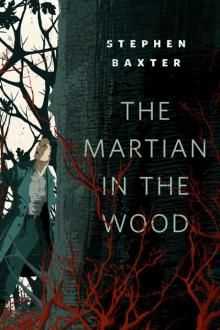 The Martian in the Wood
The Martian in the Wood THE H-BOMB GIRL
THE H-BOMB GIRL World Engine
World Engine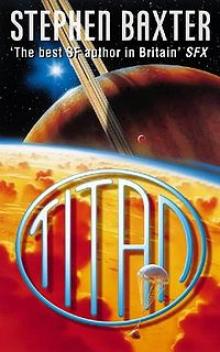 Titan n-2
Titan n-2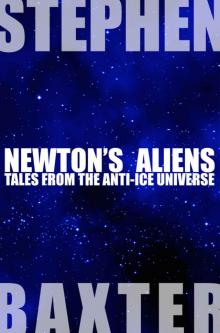 Newton's Aliens: Tales From the Anti-Ice Universe
Newton's Aliens: Tales From the Anti-Ice Universe Exultant
Exultant Manifold: Origin
Manifold: Origin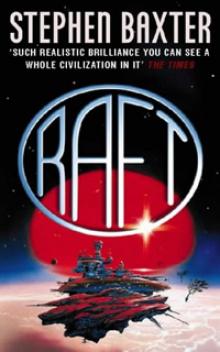 Raft xs-1
Raft xs-1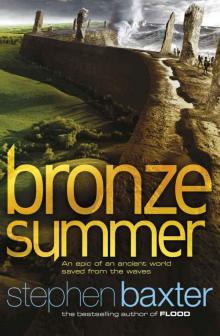 Bronze Summer n-2
Bronze Summer n-2 Transcendent
Transcendent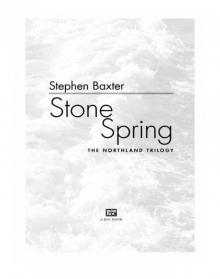 Stone Spring
Stone Spring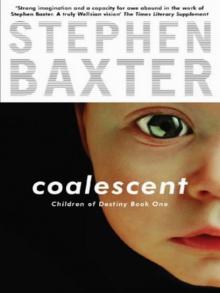 Coalescent
Coalescent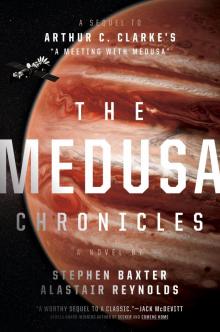 The Medusa Chronicles
The Medusa Chronicles Origin m-3
Origin m-3 Silverhair tm-1
Silverhair tm-1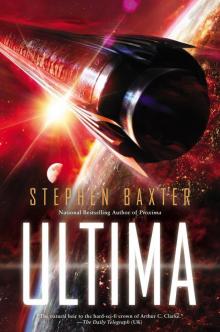 Ultima
Ultima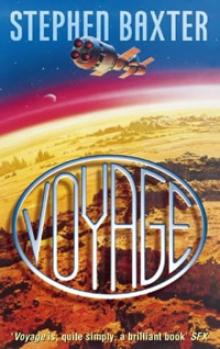 Voyage n-1
Voyage n-1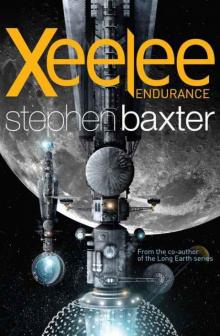 Xeelee: Endurance
Xeelee: Endurance Space m-2
Space m-2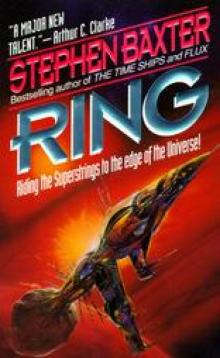 Ring xs-4
Ring xs-4 Raft
Raft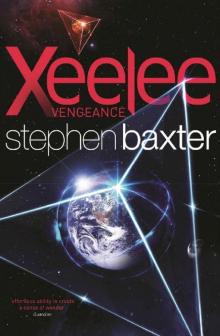 Xeelee: Vengeance
Xeelee: Vengeance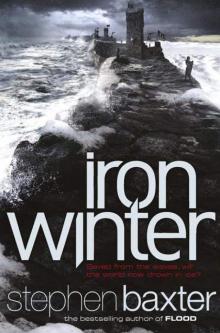 Iron Winter n-3
Iron Winter n-3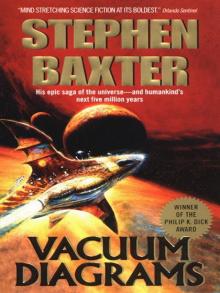 Vacuum Diagrams
Vacuum Diagrams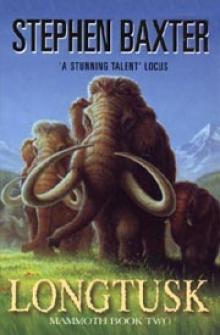 Longtusk tm-2
Longtusk tm-2 Proxima
Proxima Evolution
Evolution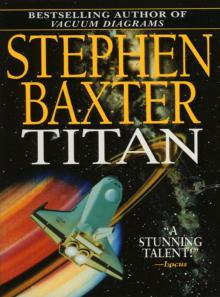 Titan
Titan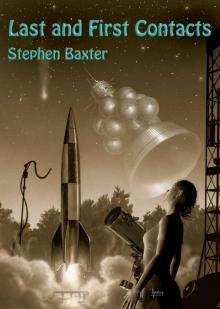 Last and First Contacts (Imaginings)
Last and First Contacts (Imaginings) Emperor
Emperor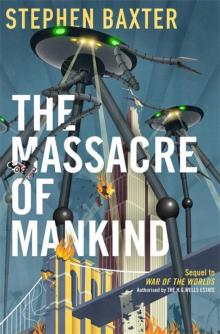 The Massacre of Mankind
The Massacre of Mankind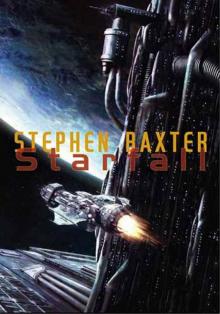 Starfall
Starfall Doctor Who - The Wheel of Ice
Doctor Who - The Wheel of Ice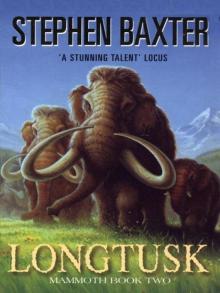 Longtusk
Longtusk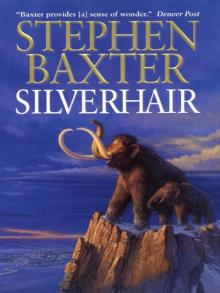 Silverhair
Silverhair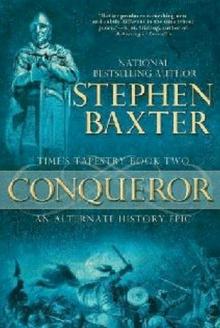 Conqueror tt-2
Conqueror tt-2 Flood
Flood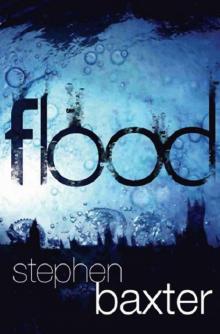 Flood f-1
Flood f-1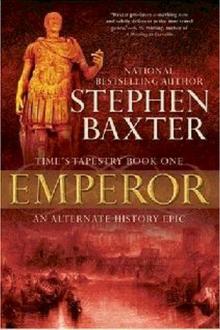 Emperor tt-1
Emperor tt-1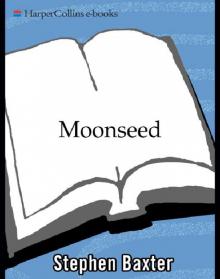 Moonseed
Moonseed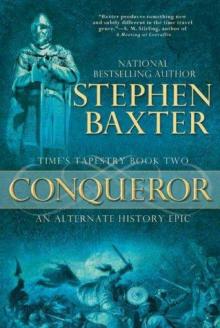 Conqueror
Conqueror Timelike Infinity xs-2
Timelike Infinity xs-2 The Ghost Pit
The Ghost Pit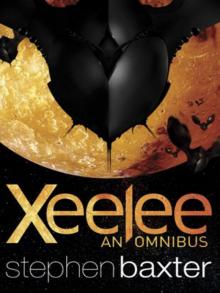 Xeelee: An Omnibus: Raft, Timelike Infinity, Flux, Ring
Xeelee: An Omnibus: Raft, Timelike Infinity, Flux, Ring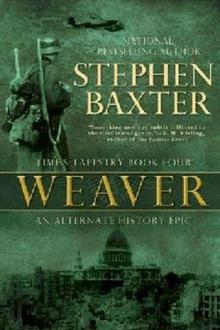 Weaver tt-4
Weaver tt-4 Landfall: Tales From the Flood/Ark Universe
Landfall: Tales From the Flood/Ark Universe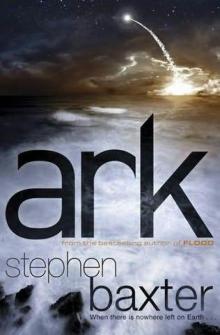 Ark
Ark Emperor: Time’s Tapestry Book One
Emperor: Time’s Tapestry Book One Space
Space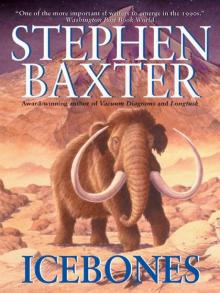 Icebones
Icebones Manifold: Space
Manifold: Space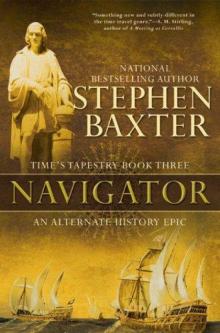 Navigator
Navigator Obelisk
Obelisk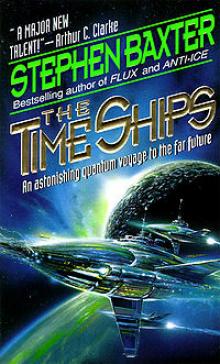 The Time Ships
The Time Ships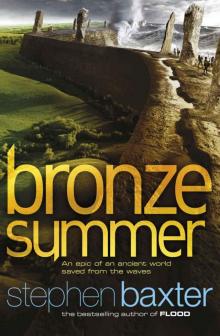 Bronze Summer
Bronze Summer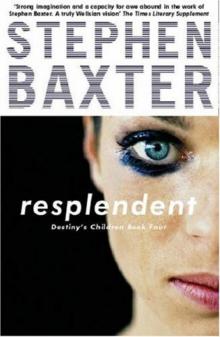 Resplendent
Resplendent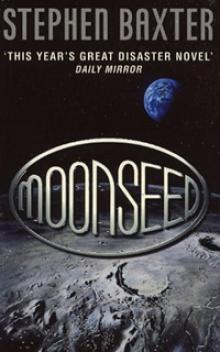 Moonseed n-3
Moonseed n-3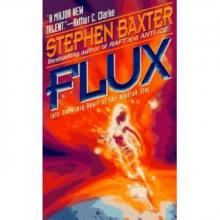 Flux xs-3
Flux xs-3 Transcendent dc-3
Transcendent dc-3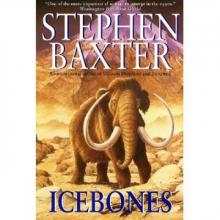 Icebones tm-3
Icebones tm-3 Phase Space
Phase Space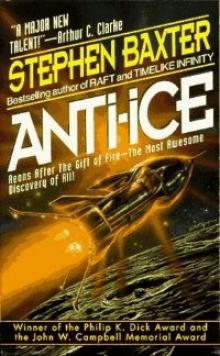 Anti-Ice
Anti-Ice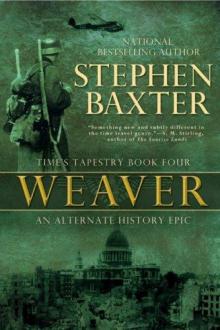 Weaver
Weaver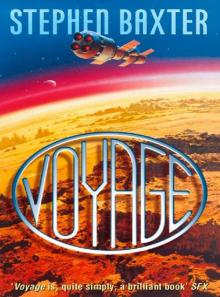 Voyage
Voyage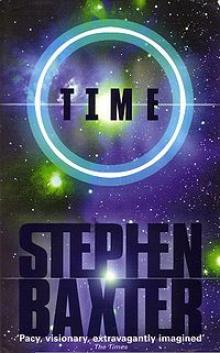 Time m-1
Time m-1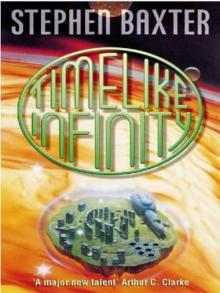 Timelike Infinity
Timelike Infinity Exultant dc-2
Exultant dc-2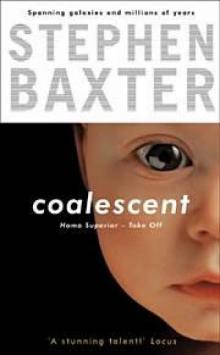 Coalescent dc-1
Coalescent dc-1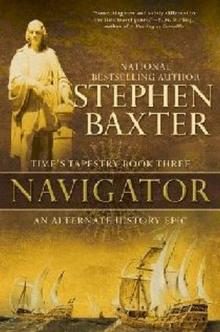 Navigator tt-3
Navigator tt-3